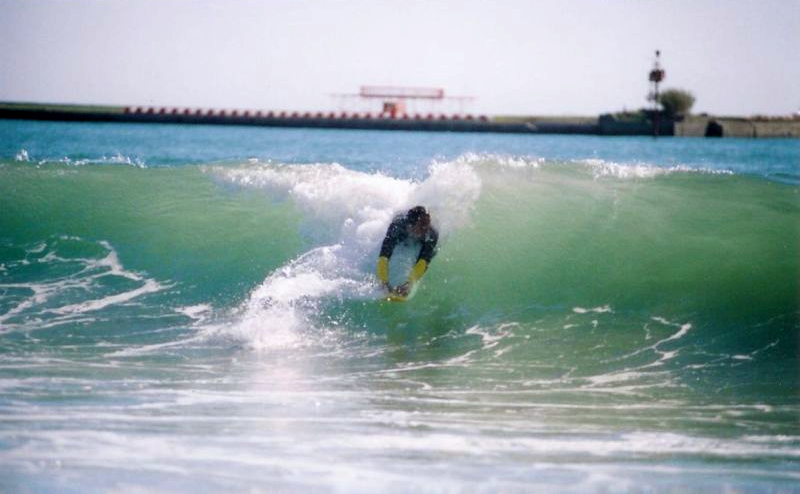|
1. ABOUT THE
PHOTOGRAPHER (SHORT BIOGRAPHY)
Once
upon a time there was a boy at school who loved playing
soccer; he was always waiting for the midday break in
order to play the daily game. His name was Hector
Zapatero, and he was 12 years old.
One summer day
sometime around the end of the 1970s, Hector went to her aunt's
house to spend the morning by the pool. While he was playing
around at the back of the garden, he opened a closet's door, and
to his surprise, he found himself standing before a surfboard.
Hector then ran to where his cousin was, and asked him:
― Whose
surfboard is the one that's inside a closet at the back of the
garden, is it yours? Can I borrow it to play with it in the
pool?"
― "That
surfboard is not mine", his cousin replied, "It's yours. Someone
gave it to your father, and he took it here. He first spoke
about it with my mother, and then they put it inside that
closet".
That day changed
Hector's life. From then on he dedicated all of his spare time
to surfboards and waves.
During the first
years of the 1980s, Hector began to first repair, and later
build surfboards. Because of his young age, he only sold his
surfboards informally, and mostly to his friends of San Antonio
(in the district of Miraflores, in Lima) and never worked
professionally in the surfboard industry here in Peru. But he
did abroad. In fact, during the second half of the 1980s Hector
first spent a few months working at a surfboard factory in
Newquay (England), and then moved to the south of Spain, where
he shaped surfboards in Cadiz and Tarifa for a couple of years.
Towards the end
of the 1980s Hector came back to Peru, and it was during this
period that his second passion arose: Translations (he is
currently a freelance translator of English, Italian and
Spanish). But then he went back to Europe again; this time to
Italy, where he kept practicing surfing in the beginning, but
gave up after a while, essentially because "most of the time the
surfing conditions were not worth the long trip to the sea". (He
lived in Milan). However, he did manage to build a few
surfboards, and even invented the "T-Board Surf & Swim", which
he patented in seven countries.
― "And what
happened to the T-Board Surf & Swim, didn't you become rich by
selling it?" I asked him during the interview we did before I
started writing this article. He laughed with irony, and replied
to me:
― "Because of
its complex shape (…), producing the T-Board industrially
required the production of a semi-automatic mould for plastic,
which was much more expensive than what I could or was willing
to spend. We did make some tests with alternative production
methods, but I decided to stop the project at that point.
However, I still have a couple of T-Boards, which I use whenever
I go bodysurfing".
Finally, by the
middle of 2016 Hector decided to come back to Peru, twenty-four
years after he had left for Italy.
― "¿How come you
decided to come back?", I asked him.
Hector remained
thoughtful for a while, like searching for an answer that would
be precise without being long. Then he stared at me and said:
― "I always knew
I would go back to the waves".
.
― Interview and bio by Alejandra Hermoza.
― Translated from
the Spanish original by Hector Zapatero.

Hector bodysurfing
with the "T-Board Surf & Swim"
|
